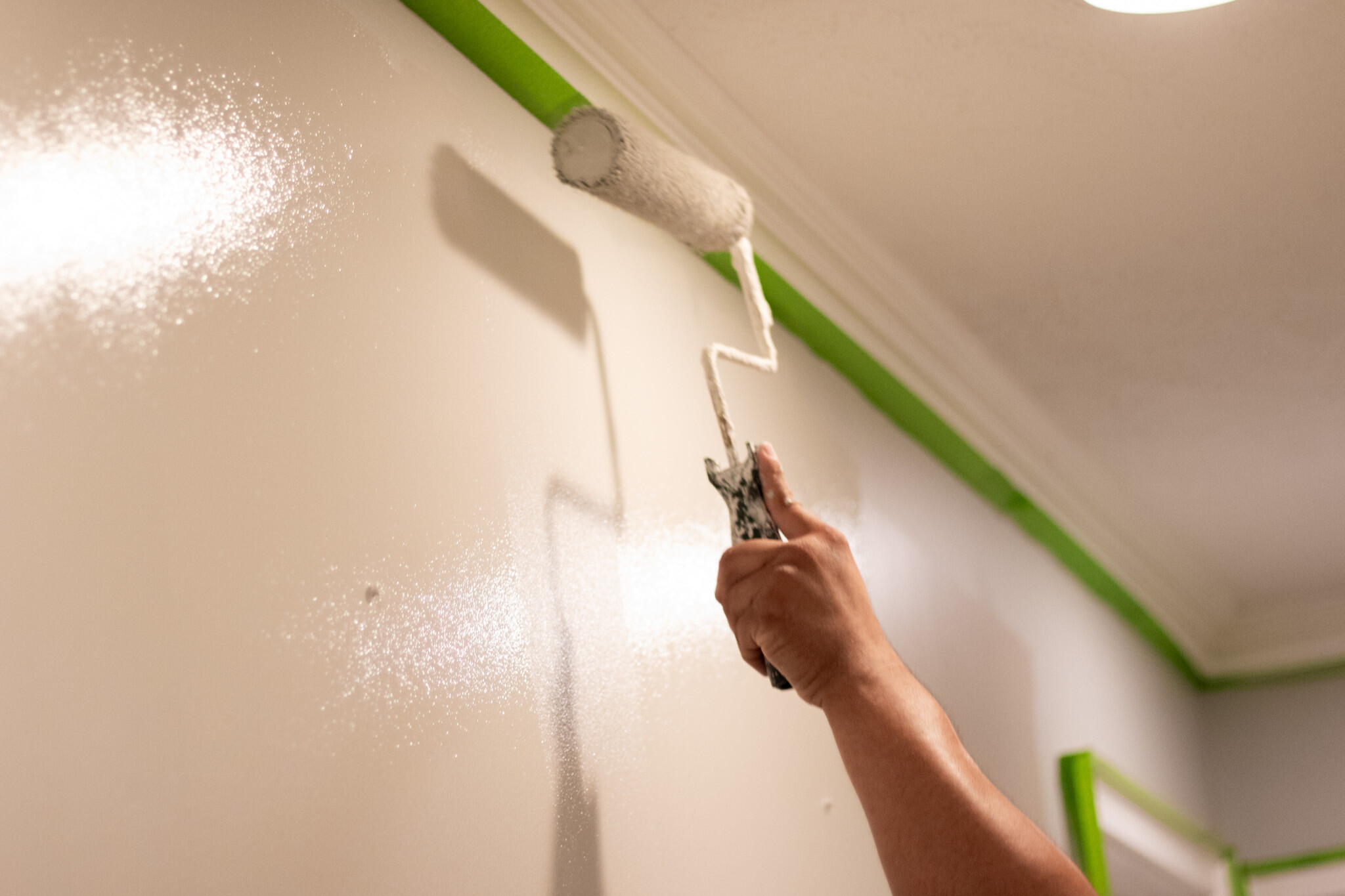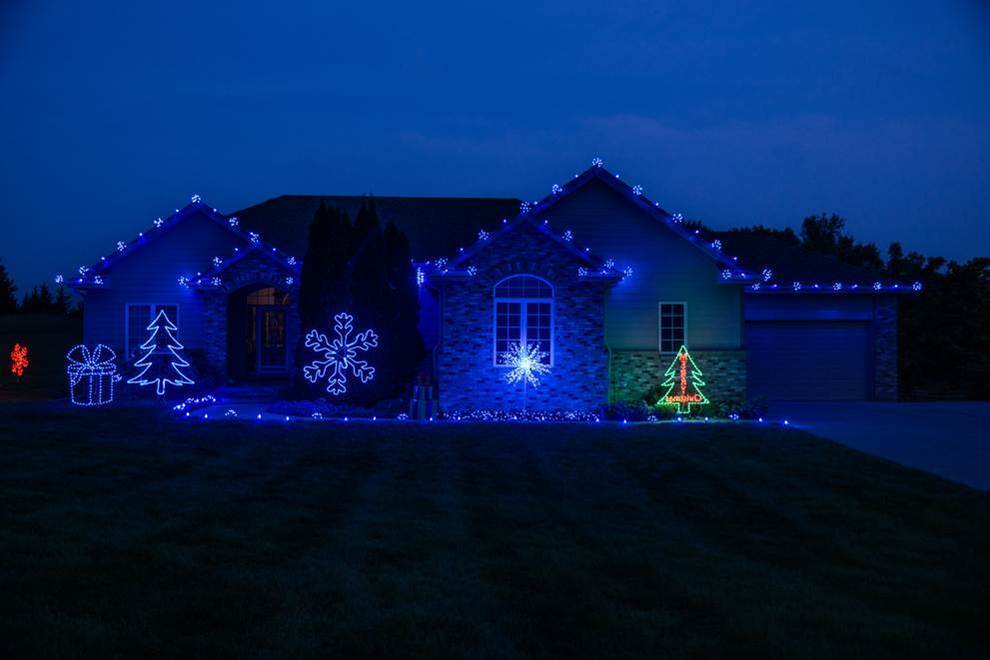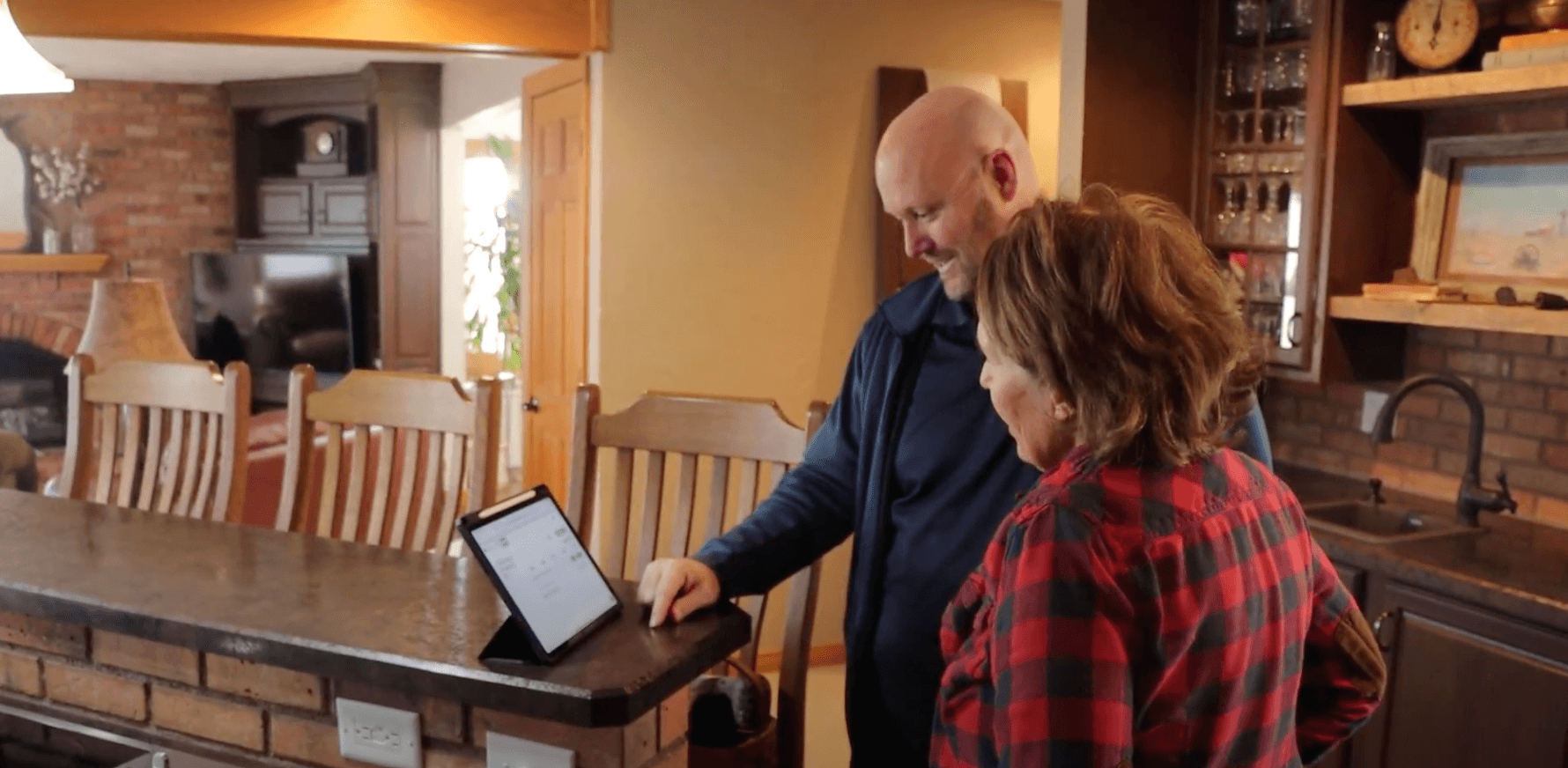How To Get Rid of the Paint Smell in Your House
August 22nd, 2024
5 min read

Have you just had your home painted and you keep getting a whiff of paint fumes? Whether your sensitive to smells or just bothered by the smell, you may be concerned with how long those smells are going to stick around.
Here at Brush & Roll Painting, we've been helping Omaha homeowners breathe easy (literally) for years. Our team has painted thousands of homes across the Omaha area and we've picked up a thing or two about dealing with paint smells along the way.
In this article, we're going to share our secrets on how to get rid of that pesky paint smell. Whether you've hired professional painters or you did the project yourself, you'll learn why paint smells, how to minimize the odor, and most importantly, how to send it packing once the job is done. By the time you finish reading, you'll be armed with practical, easy-to-follow steps to ensure your newly painted home.
Why Does Paint Smell So Strong?
Let's start with the basics. Paint smell isn't just there to annoy you (though it can do a pretty good job of that). The odor comes from volatile organic compounds, or VOCs for short. These are chemicals that easily evaporate at room temperature, releasing gases into the air.
In paint, VOCs help keep the mixture liquid and easy to apply, but once the paint is on your wall, they start to evaporate – that's what causes the smell.
Now, before you start imagining your walls oozing toxic sludge, take a deep breath (maybe outside for now). Modern paints have come a long way in reducing VOCs. In fact, a 2019 study by the American Coatings Association found that VOC emissions from architectural coatings have decreased by about 88% since 1990.
Still, even low-VOC paints can leave a lingering odor. So, let's talk about how to minimize it from the get-go.
Choosing a Low VOC Paint
If you haven't started painting yet, you're in luck! Choosing the right paint can significantly reduce odors. Look for paints labeled as "low-VOC" or "zero-VOC". These paints not only smell less, but they're also better for your health and the environment.
For all of us in Omaha, dealing with cold winters and humid summers, we recommend high-quality acrylic paints. They're durable, low-odor, and can handle our Midwest weather mood swings.
Top Low-VOC and Zero-VOC Paint Choices:
- Aura Interior and Exterior Paint by Benjamin Moore
- Eco-Spec by Benjamin Moore
- Duration Interior Paint by Sherwin Williams
- Emerald Interior Paint by Sherwin Williams
 Prep Work Before Interior Painting
Prep Work Before Interior Painting
Whether you're hiring professionals or going the DIY route, proper preparation can make a world of difference. Here are some tips:
- Ventilation is your best friend: Open all windows and doors before you start painting. If you have fans, set them up to create a cross-breeze. Think of it like you're trying to air out your house after burning the Thanksgiving turkey – you want that air moving!
- Temperature matters: Paint in cooler temperatures when possible. VOCs evaporate more slowly in cooler air, giving you more time to ventilate. Aim for temperatures between 50-80°F. In Omaha, early fall or late spring can be ideal painting seasons.
- Seal off other areas: Use plastic sheeting to seal off areas you're not painting. This prevents the smell from spreading throughout your home. It's like containing a sneeze – you want to keep those paint particles where they belong!
- Use an air purifier: If you have one, run an air purifier with a HEPA filter in the room you're painting. It can help capture some of those VOCs floating around.
How To Avoid Paint Fumes While Painting
So, you've prepped like a champ, and now it's time to paint. Here are some tips to minimize odors during the process:
- Take breaks: Step outside every hour or so to give your nose a break and get some fresh air.
- Keep the ventilation going: Don't close up the room just because you're done painting for the day. Keep those windows open and fans running as long as possible.
- Use natural odor absorbers: Place bowls of white vinegar, coffee grounds, or baking soda around the room. These natural odor absorbers can help soak up some of those paint fumes. It's like having tiny, smell-fighting ninjas scattered around your room.
-Aug-22-2024-02-22-51-7178-PM.png?width=624&height=326&name=Blog%20Post%20Image%20Size%20(5)-Aug-22-2024-02-22-51-7178-PM.png)
How To Get Rid of the Smell of Paint
Alright, the paint's dry, but that smell is overstaying its welcome like a houseguest who doesn't get the hint. Time to show it the door! Here are some tried-and-true methods to get rid of paint smell:
- Keep ventilating: We sound like a broken record, but ventilation is key. Keep those windows open and fans running at least a few hours
- Try the bucket of water trick: Fill a bucket with water and leave it in the center of the room overnight. The water will absorb some of the paint vapors. In the morning, dispose of the water outside. It's like a spa treatment for your room – soaking up all the bad stuff!
- Break out the vinegar: Fill some shallow dishes with white vinegar and place them around the room. Vinegar is excellent at neutralizing odors.
- Baking soda: Sprinkle baking soda on the carpet, let it sit overnight, and vacuum it up in the morning. It's like giving your carpet a deep clean and odor-fighting treatment all in one.
- Charcoal: Place a few bowls of activated charcoal around the room. Charcoal is a natural air purifier and can absorb odors effectively. You can find it at most pet stores or aquarium supply shops.
- Essential oils for the win: Once the paint smell starts to fade, you can use an essential oil diffuser to introduce pleasant scents. Lemon, peppermint, or lavender can work wonders in freshening up the air.
- The coffee grounds method: Used coffee grounds can absorb odors effectively. Place them in shallow bowls around the room. Bonus: your room might end up smelling like a cozy café!
- Candles, but not just any candles: Look for candles specifically designed to eliminate odors, not just mask them. Light them for a few hours each day to help neutralize the paint smell.
- The power of plants: Certain houseplants are natural air purifiers. Spider plants, peace lilies, and snake plants are particularly good at absorbing indoor air pollutants. Plus, they add a nice touch of green to your newly painted room!
Remember, patience is key. Depending on the type of paint used and the size of the room, it might take anywhere from a few days to a couple of weeks for the smell to completely dissipate. But with these methods, you'll be breathing easy in no time.
How Long Does the Paint Smell Last?
Unfortunately, there's no one-size-fits-all answer. It's like asking how long it takes to drive across Nebraska - it depends on where you start, where you're going, and how many times you stop.
That said, we can give you some ballpark figures based on our years of experience painting homes across Omaha:
- Latex Paints (Water-Based): These are the most common for interior walls. Generally, latex paint smell can linger for 14 to 24 hours. But don't break out the air fresheners just yet! The odor might be noticeable for up to 2 weeks, especially if you're sensitive to smells or used a darker color. Dark colors often have more VOCs, which means more smell.
- Oil-Based Paints: If you've used oil-based paint (common for trim or in older homes), brace yourself. These paints can smell for up to 2 months.
- Low-VOC and Zero-VOC Paints: These eco-friendly options can lose their smell in as little as 24 hours.

Safety Painting Precautions
While we're focused on getting rid of paint smells, it's important to mention safety. If you or anyone in your household experiences headaches, dizziness, or nausea after painting, get some fresh air immediately and consult a healthcare professional if symptoms persist. These could be signs of overexposure to paint fumes.
If you’re painting yourself, always follow the manufacturer's instructions on the paint can. They're not just there for decoration – they contain important safety information and guidelines for proper use and ventilation.
When spray painting, always use proper masks and protection.
Paint Smells Your Home
Remember when you first walked into that newly painted room and felt like you needed a gas mask? Well, armed with these tips and tricks, you're now ready to tackle any paint odor that stays in your home.
From choosing the right paint to the proper prep work steps, you've got all the tools to stop the smell of paint from intruding your home.
At Brush & Roll Painting, we're more than just painters – we're your partners in creating a home that's beautiful inside and out. We've been serving the Omaha community for years, and we're always here to help you with your painting needs. Click the button below if you’re ready to get a quote for your home.
If you have yet to hire a painter for your project, it’s important that you hire the right one so you don’t make any costly mistakes. All projects are different, so you deserve to have a painter that will meet your expectations.
Click the button below to download an ultimate guide to hiring a painter. By doing so, you can get all the tips and tools you need to hire the best painter for your project.
Kaylea is the Brush & Roll Painting Content Manager. Kaylea is a Journalism and Media Communications summa cum laude graduate with a minor in Marketing from the University of Nebraska at Omaha. Kaylea manages the marketing for Brush & Roll Painting.



















-Jul-23-2025-02-21-33-5468-PM.png?width=800&height=418&name=Blog%20Post%20Image%20Size%20(2)-Jul-23-2025-02-21-33-5468-PM.png)




-Oct-22-2025-01-39-19-5208-PM.png?width=800&height=418&name=Blog%20Post%20Image%20Size%20(1)-Oct-22-2025-01-39-19-5208-PM.png)


